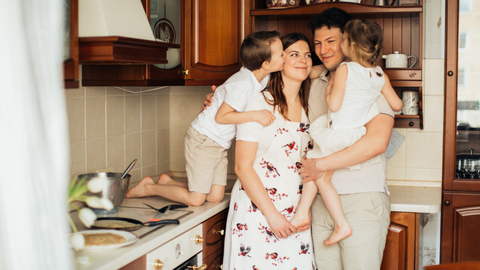
Childhood anxiety and the importance of playtime
Today we see a lot of children diagnosed with anxiety, and we are concerned about the lack of resources to help them improve their mental well-being to enjoy their life. I created this post to explain how there are many triggers for anxiety in children's lives and how you could use different activities and products to help them soothe naturally.
The importance of playing
Play is, first of all, the child's language; it is the way they communicate. Through play, the child can express a wide range of emotions, much more than by talking.
By expressing and communicating through play, we allow the child to externalize what is happening to them, which is very important at ages that cannot yet put it into words.
Play helps them calm down and relieve tension and is an excellent practice to implement with anxious children: play with them, understand them, and help them relax through a safe and fun space.
The mutual interaction generated through play is significant to creating solid and sustainable bonds. When we play with a child, we show our interest in being with them and having fun together. The connections generated when playing with another stimulate essential nervous connections in the child's brain that serve as a natural calming agent.

Anxiety in Children
Francesca Coltrera, in her post "Anxiety in Children" written for Harvard Health Blog, lists specific symptoms that can show us that a child is suffering from anxiety. Among them are symptoms such as trouble falling or staying asleep, restlessness or fatigue, tantrums, crying, headaches and tummy aches, difficulty concentrating. We also know another prevalent symptom: exaggerated fears (of separation from parents, school, death, recurrent nightmares).
There are also different types of anxiety that we could find in children. Coltrera mentions separation anxiety (excessive fear of the child to be separated from his parents), social anxiety (extreme fear of the child to participate in social environments such as school or a birthday), and specific phobias (excessive fear of something special such as dogs, aeroplanes).
Coltrera also mentions that biological, psychological, and environmental factors can make a child more predisposed to anxiety.
In this blog, I want to focus on the environmental factors and how we can help children feel less anxious or know how to manage their anxiety by creating changes in the environment.

Adults can provide an environment that helps the child manage anxiety.
- Organization and structure:
Children need routines and organization in their environments, and even more those who suffer from a certain predisposition to anxiety.
It is essential to provide schedules and order in their tasks and activities during the day. The child must have a regular time to sleep, get up, do homework, eat, and take a bath. All this gives the child order and security, which is essential for them to feel calm and confident that they are familiar with their environment and what is to come. Giving uncertainty to a child who does not know what will happen in their day is not beneficial for their mental well-being.

- Be empathetic with their suffering and help them name their emotions.
The child sometimes does not know what is happening to her, so it is essential to help her talk about these issues, her fears, her worries, how she feels, and where she feels. Storybooks are a helpful tool since the child can indirectly identify with the character and his problems.
It is also vital to help them name their emotions and help them differentiate what is happening to them. It is not the same if something makes us angry or if it makes us sad; that is why it is crucial to help the child to name the different emotions and differentiate what she feels at each moment. You can create cards with the names of the basic emotions, and when the child comes home from school or wakes up, stick them on the wall and tell him how he feels today.

- Being a positive role model
It is essential in the early years to be a role model for children and help them regulate their emotions.
One way to do this is to put into words what we think is happening to the child and talk about how you are feeling. In this way, we give the child the confidence to feel that their home and the adults in their lives are safe environments where they can openly talk about what is going on with them.
It is also important that we as adults learn to handle moments of tension or frustration to show children that we can regulate. If, as adults, we show fear or become overly nervous about things that happen to them or us, the child learns that this is the way to behave and that fears are overwhelming.

- Anxiety Box Tool
With very anxious children, a handy tool is to have a box that we usually call "Anxiety Box Tool." The child has useful objects that help them regulate themselves and feel calmer when they feel nervous and worried.
In addition to the adult's help, they must find tools to regulate themselves, which will help them in the future for their autonomy and self-confidence.
One of the objects from our collection that parents can incorporate into this resource box is our sensory bottles with great relaxing qualities to help the child feel calmer and enjoy the movement of the objects in them. Other examples to put in the box can be toys that give them security, a weighted blanket, a relaxing scent.

I hope this post has helped you understand what anxiety in children is about and recognize specific alarms to help them prevent the symptoms from increasing and the child from suffering more.
If you liked this post and want to read more about the topic, I recommend our 5 Relaxation Exercises for kids Blog Post!







